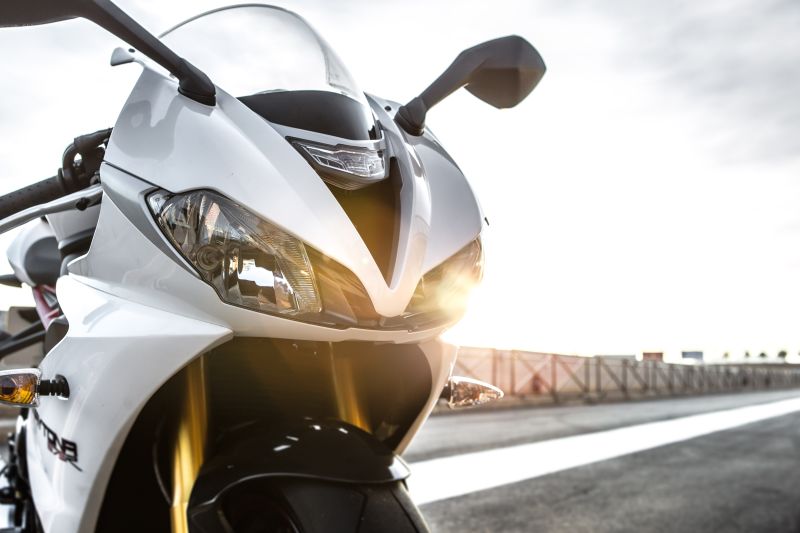The normal ABS is the default setting, so after pushing the buttons on the revised instrument panel to select the Circuit mode I headed down the Cartagena pit lane on what turned out to be a seriously rapid motorbike — and a brilliantly enjoyable one too. There must have been a slight risk that the short-stroke engine would lose some of the grunt and character that have always been among the Daytona’s most valuable weapons against its four-cylinder rivals. Thankfully, that doesn’t seem to be the case at all, though I’d need to ride it on the road to be absolutely sure.
Short-shifting through my out lap, the Triumph pulled cleanly from 5,000 RPM or lower, gaining revs in exhilarating and very linear fashion. By the time it reached 8,000, the bike was storming forward, the tacho needle sweeping round the dial and the engine screaming with a tuneful note from the intake and silencer. Such was the triple’s spread of torque that it felt as though I could have taken most bends a gear higher than the optimum ratio, at very little cost to the lap time.
The advantage from a few extra horsepower was impossible to confirm in isolation, though I don’t doubt there’s a slight gain. What was obvious, and sometimes useful, was the new motor’s higher rev limit. In a couple of places I could scream the triple to over 14,000 RPM — blue lights flashing on the dash — and hang on to a gear until the next bend, rather than have to change up and then back down as the old engine would have demanded.
The revised gearbox and quick-shifter (which comes with the R and is an accessory with the standard 675) were impressive, too. I didn’t miss a change all day, which wouldn’t have been true of the previous Daytona. My only slight problem was occasionally struggling to get my foot under the lever in time to change up, as the bike accelerated round one long left-hand curve.
Throttle response was also very good. Triumph haven’t taken the opportunity to equip the Daytona with a ride-by-wire system, as they did with the Tiger Explorer and Trophy, and it’s easy to understand why when the conventional system works as well as this. There’s also no traction control to match the system that Kawasaki’s ZX-6R has brought to the class. (Triumph say they won’t fit TC without ride-by-wire.) A good system could be useful, but I can’t say I missed it and nobody crashed all day.



… [Trackback]…
[…] There you will find 39079 more Infos: bikeindia.in/triumph-daytona-675r-triple-treat-power-agility-stability/ […]…